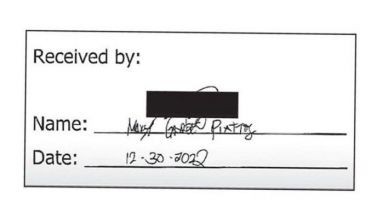SC upholds Comelec's power to regulate review of poll system
MANILA, Philippines - The group identified with newly appointed election commissioner Augusto Lagman has lost its bid seeking to stop the Commission on Elections (Comelec) from regulating its review of the source code used in the automated election system (AES) in last year’s election.
In a resolution promulgated last April 12 but released only yesterday, the Supreme Court (SC) upheld Comelec’s power to regulate the independent review of the poll system through imposition of security measures.
The SC junked for lack of merit the motion of Center for Empowerment in Governance (Cenpeg) seeking to hold Comelec in contempt for requiring a set of conditions for this private group to access and review the source code used in the 2010 automated polls.
Cenpeg questioned the source code of IT consortium Smartmatic-Total Information Management Corp. that was used in the last year’s elections.
The SC ruled that the source code remains the private intellectual property of Smartmatic, thus the Comelec had the right to impose reasonable security restrictions in a post-election review being sought by Cenpeg.
This is to prevent the source code from being tampered with or unduly appropriated or copied.
Source code pertains to the series of encrypted instructions and programs on the software used for the precinct count optical scan (PCOS) machines in the May 2010 polls. The Comelec had leased the source code from its private partner Smartmatic-TIM.
The ruling is an apparent setback for Lagman’s group.
Lagman, right after he was appointed by Malacañang to fill the last vacancy in the Comelec, had bared plans to work on the poll body’s compliance with the Sept. 21 SC ruling that allowed interested third-party groups to conduct an independent review of the source code.
Lagman yesterday expressed his disappointment over the SC ruling.
“That’s not very good ... I don’t know why the Supreme Court decided in that manner,” he said.
According to Lagman, the Comelec has not even complied with the SC ruling last year to make public the source code but the SC has already favored the poll body in another ruling.
“If you don’t follow an SC ruling, you violate the law. That’s actually one of my strong recommendations (when I formally join the Comelec) – to release the source code,” he said.
Lagman said the Poll Automation Law does not provide for source code review to be regulated.
Lagman, however, maintained he would not give up on his belief that the Comelec should be transparent on the source code and other of its dealings.
“I will still push for it. I may be outvoted because I’m just one of the seven (poll) commissioners but I won’t change my mind on this,” he added.
But the SC explained in the latest ruling that Comelec had “valid reasons” to impose the security restrictions for the review since its contract with Smartmatic provides that the AES technology would remain Smartmatic-TIM’s intellectual property.
“(Smartmatic) has not ceded its ownership right to the Comelec. Indeed their contract provides only for guarded disclosure of the source code,” the court pointed out.
While Cenpeg has a valid interest to review the code, the SC said Cenpeg “has no right to appropriate and acquire the same” code to test its technical proficiency.
“The question is, were the restrictions the Comelec imposed on the review of the source code reasonable?”
The Court holds that they were.
The SC also noted that “none of the conditions essentially designed to prevent copying, appropriation and unauthorized use of the source code has been demonstrated as making it impossible for Cenpeg to conduct a proper source code review.”
It even noted that “Cenpeg has not even attempted to do a review under such conditions.” – With Sheila Crisostomo
- Latest
- Trending




























